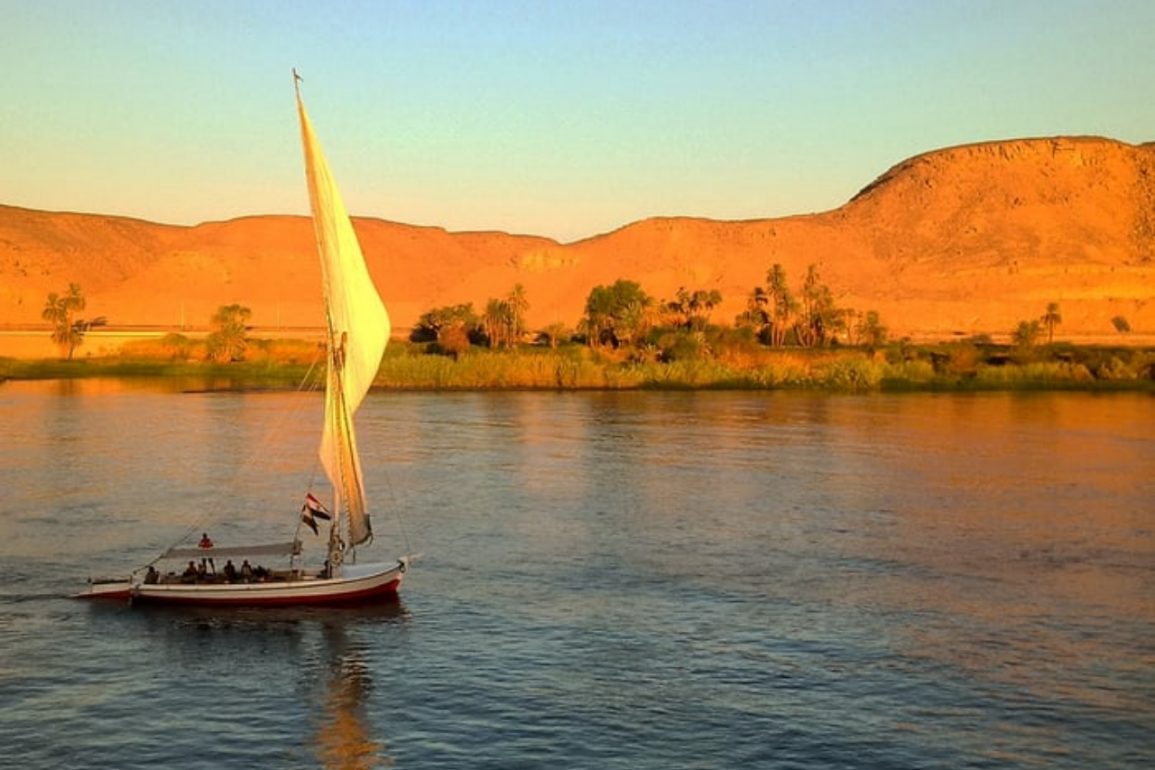Located in Northeast Africa, the Nile River flows through Egypt, Ethiopia, Sudan, Uganda, Burundi and six other African countries. The source of the Nile River which is widely considered to be the longest river in the world (some researchers argue that the Amazon river in South America is the longest river in the world) has always been a matter of argument for most people. Facts about the Nile River have been twisted/ told falsely almost every where on the internet, but today you’ll have the honour of reading the correct facts about the Nile River from very trustworthy sources like National Geographic.
The Source Of The Nile River
Lake Victoria also known as Victoria Nyanza was considered to be the origin of The River Nile because the Nile River begins in the area of Lake Victoria which has many tributaries. The largest of Lake Victoria’s tributary, The Kagera River, is now considered to be the true source of the Nile River.
Now, let’s cover more awesome facts about the Nile River.

Here are facts about the Nile River:
- The Nile River flows through 11 countries, which are: Tanzania, Rwanda, Burundi, Uganda, the Democratic Republic of Congo, Ethiopia, South Sudan, Sudan, Kenya, Eritrea, and Egypt.
- The origin of the Nile River’s name is still debated. Some people say that the name originated from the Semitic word: Nahal, which means “river”. However, the Greek word, “neilos”, which means valley, is the true origin of the river’s name.
- The Nile River spans a total length of 6650 km (4132 miles). Its basin covers an area of 3.4 million square kilometers, and traverses ten African countries called the Nile Basin countries.
- The Nile River was a very important resource for ancient Egyptians as it provided water, food, transportation and excellent soil for growing food. So, most ancient Egyptians lived near the Nile.
- The Nile River flooded every year in a season the Egyptians called akhet (between June – September). The reason for this flooding was that melting snow and heavy summer rain in the Ethiopian mountains formed a huge amount of water, causing the banks of the Nile River to overflow.
- A dam called the Aswan High Dam was built in 1970 to control the yearly flooding of the Nile River.
- According to National Geographic, more than 95% of Egypt’s population depends on the river and live miles away from it.
- Ancient Egyptians had a two week holiday of celebration called “Wafaa an-Nil” to celebrate the flooding of the Nile River. Hapi was the god of the flooding.
- You might wonder why the ancient Egyptian people celebrated the Nile River flooding. Well, it was because the flooding provided rich soil which aided the growth of crops by leaving the soil thick and rich.
- Some of the largest and most dangerous species of crocodiles are found in the southern stretch of the river. Although, the population of the crocodiles reduces each year.
- The average discharge of the Nile River is 3.1 million litres (680,000 gallons) per second.
- The Nile River is formed by two major tributaries which are the White Nile and the Blue Nile. The tributaries meet in Sudan close to the capital of Khartoum before flowing northwards into the Mediterranean Sea.
I hope you find the facts about the Nile River fantastic and intriguing. If you know any more interesting facts, kindly share them and keep visting African writers hq for more interesting stories from Africa.






